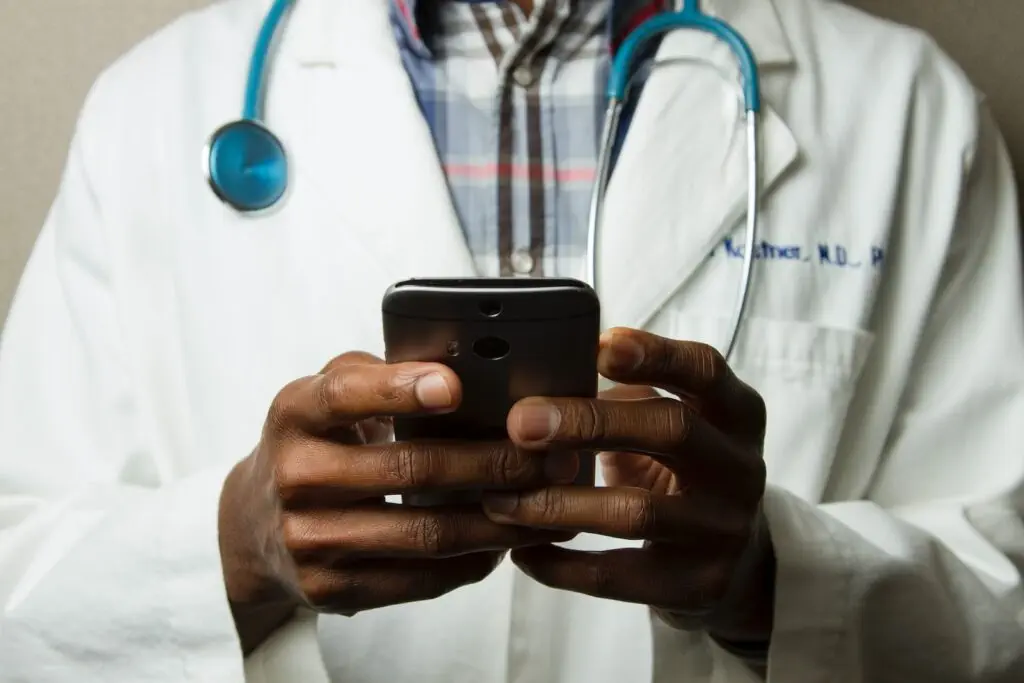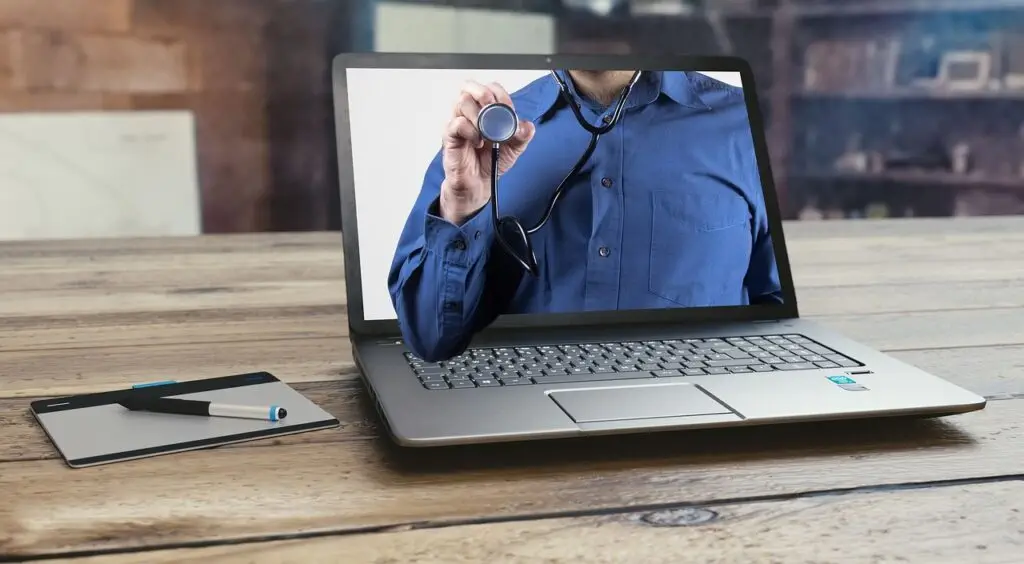Telehealth Technology Improving Nursing Care
Did you know that telehealth technology is revolutionizing nursing care?
With its ability to enhance patient monitoring and communication, telehealth is making a significant impact on the healthcare industry.
Not only does it improve access to healthcare for patients, but it also streamlines nursing workflow and increases efficiency.
However, there are also challenges and limitations that need to be addressed.
In this article, we will explore the benefits of telehealth technology in nursing care and delve into both its potential and pitfalls.

Benefits of Telehealth Technology in Nursing Care
You’ll be amazed at the benefits telehealth technology brings to nursing care. One of the significant advantages is its ability to provide remote patient monitoring. With telehealth, nurses can monitor patients from a distance, reducing the need for in-person visits and allowing for continuous care. This enables nurses to track vital signs, medication adherence, and overall health status without being physically present with the patient.
Telehealth technology also facilitates virtual consultations between nurses and patients. Through video calls or secure messaging platforms, nurses can communicate with patients in real time without the constraints of geographical distance. This not only saves time and travel costs but also improves accessibility to healthcare services for individuals who may have difficulties visiting a healthcare facility.
You can find out more about the nursing services we offer here.
Furthermore, telehealth technology enhances collaboration among healthcare professionals. Nurses can consult with other healthcare providers remotely, enabling them to seek advice or guidance on complex cases without delay. This interdisciplinary approach allows for more comprehensive and coordinated care for patients.
Enhancing Patient Monitoring and Communication With Telehealth
Stay connected with your healthcare provider and receive real-time updates on your health through telehealth solutions. Telehealth has revolutionized patient monitoring and communication, allowing for remote patient care and virtual consultations. Here are four ways telehealth enhances patient monitoring and communication:
- Continuous Monitoring: With telehealth, healthcare providers can remotely monitor patients’ vital signs, such as heart rate, blood pressure, and oxygen levels. This allows for timely intervention in case of any abnormalities.
- Improved Communication: Telehealth enables seamless communication between patients and healthcare professionals through video conferencing or secure messaging platforms. Patients can easily discuss their symptoms, concerns, and treatment plans from the comfort of their own homes.
- Timely Intervention: Through remote patient monitoring, healthcare providers can detect potential health issues early on and intervene promptly to prevent complications or hospitalizations. This proactive approach improves patient outcomes while reducing healthcare costs.
- Access to Specialists: Telehealth eliminates geographical barriers by connecting patients with specialists located in different regions or even countries. Virtual consultations ensure that patients have access to specialized care without the need for travel or long wait times.
Telehealth’s Role in Improving Access to Healthcare for Patients
Access to healthcare for patients is greatly improved through telehealth, allowing you to connect with healthcare professionals and receive necessary medical care regardless of geographical barriers. Telehealth plays a crucial role in improving access to healthcare for patients, particularly in rural communities where distance and limited resources often pose challenges. By utilizing telehealth technology, individuals living in remote areas can now easily consult with doctors and specialists without having to travel long distances or face difficulties accessing transportation. This has significantly increased the availability of healthcare services in underserved regions, ensuring that patients receive timely and proper medical attention.
Moreover, telehealth’s impact on reducing healthcare costs cannot be overlooked. Through virtual consultations and remote monitoring, unnecessary hospital visits and emergency room admissions are minimized, leading to cost savings for both patients and the healthcare system as a whole. Additionally, telehealth allows for early intervention and preventive care measures that can help manage chronic conditions more effectively, leading to reduced hospitalizations and overall healthcare expenses.
The Impact of Telehealth on Nursing Workflow and Efficiency
By utilizing telehealth, nurses can streamline their workflows and improve efficiency in providing patient care. Telehealth implementation has revolutionized nursing practice by leveraging technology to deliver healthcare remotely. Here are four ways telehealth has had a significant impact on nursing workflow and effectiveness:
- Enhanced Communication: Telehealth allows nurses to communicate with patients in real-time through video conferencing or messaging platforms. This instant communication eliminates the need for multiple phone calls or physical visits, saving time and improving response times.
- Remote Monitoring: Nurses can now monitor patients’ vital signs, symptoms, and medication adherence from a distance using wearable devices or home monitoring equipment. This proactive approach enables early intervention while reducing unnecessary hospital visits.
- Efficient Documentation: Telehealth platforms often come equipped with electronic health record systems that streamline documentation processes. Nurses can easily update patient records during virtual consultations, eliminating the need for manual entry later on.
- Collaborative Care: With telehealth, nurses can collaborate with other healthcare professionals across different locations seamlessly. Through virtual meetings or shared medical records, they can discuss treatment plans, seek second opinions, and provide comprehensive care to patients without geographical limitations.
Telehealth’s effectiveness in improving nursing workflows is evident through increased productivity, reduced administrative burden, and improved patient outcomes. As this technology continues to evolve and become more accessible, its impact on nursing care will only continue to grow.
Addressing Challenges and Potential Limitations of Telehealth in Nursing Care
To overcome the challenges and potential limitations of telehealth in your nursing practice, it’s important to address issues like connectivity, patient privacy, and the need for hands-on physical assessments.
When utilizing telehealth technology, remote patient monitoring can be a valuable tool for nurses to remotely assess and monitor patients’ vital signs and health conditions. This allows for timely interventions and proactive care management. However, ensuring reliable connectivity is crucial to avoid disruptions in data transmission and communication between healthcare providers and patients.
Another challenge that arises with telehealth is maintaining patient privacy. It’s essential to implement secure platforms and protocols that protect sensitive patient information during virtual consultations. This includes using encrypted video conferencing software and adhering to strict data protection regulations.
While telehealth offers many benefits, there are instances where hands-on physical assessments are necessary for accurate diagnosis or treatment planning. Nurses should collaborate closely with other healthcare professionals to determine when an in-person visit is required.

Frequently Asked Questions
What Are the Specific Benefits of Telehealth Technology in Nursing Care for Rural Communities?
Improved access and remote monitoring are two specific benefits of telehealth technology in nursing care for rural communities.
By utilizing telehealth technology, individuals in rural areas can have easier access to healthcare services without having to travel long distances.
Additionally, remote monitoring allows healthcare professionals to monitor patients’ conditions from a distance, enabling early detection of any potential issues and timely intervention.
These benefits contribute to improved healthcare outcomes and increased patient satisfaction in rural communities.
How Does Telehealth Technology Improve Patient Engagement and Satisfaction in Nursing Care?
Using telehealth technology can greatly improve patient engagement and satisfaction in nursing care.
Patient empowerment is enhanced through the ability to remotely monitor their health and access healthcare professionals from the comfort of their own homes.
With telehealth, patients feel more involved in their care, leading to better communication and a stronger sense of control over their health outcomes.
This ultimately results in higher levels of patient satisfaction and improved overall nursing care.
Can Telehealth Technology Be Used to Monitor and Communicate With Patients With Chronic Conditions?
Yes, telehealth technology can be used to monitor and communicate with patients with chronic conditions.
Through remote patient monitoring, healthcare providers can keep track of vital signs, medication adherence, and symptoms from a distance.
Virtual consultations allow for real-time communication between patients and nurses, enabling timely interventions and adjustments to treatment plans.
This improves the overall management of chronic conditions, enhances patient satisfaction, and reduces the need for frequent in-person visits to healthcare facilities.
What Measures Can Be Taken to Ensure Patient Data Security and Privacy in Telehealth Nursing Care?
To ensure patient data security and privacy in telehealth nursing care, it is crucial to implement robust cybersecurity measures. Patient confidentiality should be protected through secure encryption methods and strong authentication protocols.
Regular audits and updates of software systems can help identify vulnerabilities and address them promptly. Additionally, healthcare professionals must receive proper training on data protection and adhere to strict privacy policies.
How Does Telehealth Technology Address Disparities in Healthcare Access for Underserved Populations?
Telehealth technology is crucial in addressing healthcare disparities and improving access to healthcare for underserved populations. By providing remote healthcare services, telehealth eliminates the barriers of distance and transportation that often hinder individuals from accessing necessary medical care.
This technology enables underserved populations to receive timely and convenient healthcare services, reducing disparities in access to quality care. Telehealth’s ability to bridge the gap between patients and healthcare providers is an essential tool in promoting equitable healthcare for all.
Telehealth Technology Is Revolutionizing Nursing Care
In conclusion, telehealth technology is revolutionizing nursing care. It does so by enhancing patient monitoring and communication, improving access to healthcare, and streamlining workflow.
With telehealth, nurses can remotely monitor patients’ vital signs and provide timely interventions, leading to better outcomes. This technology allows for increased accessibility to healthcare services for patients in remote areas or with limited mobility.
While there are challenges and limitations to consider, the benefits of telehealth far outweigh them. Embracing this innovative tool will undoubtedly lead to improved nursing care and ultimately better patient outcomes.
If you are interested in learning more about telehealth, the Department of Health and Aged Care is a great place to start.







